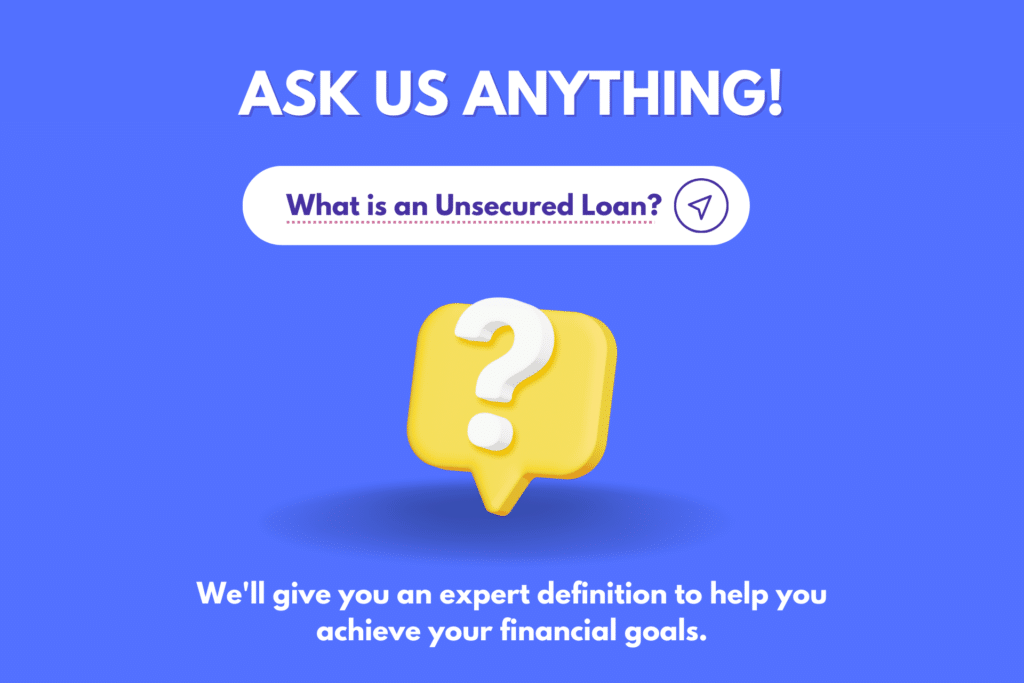Definition Explained with Real-life Examples and Strategies for Success
What is an Unsecured Loan? Here’s What You Should Know
Are you considering taking out a loan but unsure of the difference between a secured and unsecured loan? Or perhaps you’ve heard the term “unsecured loan” thrown around but don’t quite understand what it means or know the definition of an unsecured loan.
Don’t worry; you’re not alone!
Many people are unfamiliar with this financial term, but knowing if you’re considering borrowing money is important. In this post, we’ll break down what an unsecured loan is by providing you with the complete unsecured loan definition and why it’s different from a secured loan.
By the end, you’ll have a solid understanding of this term and be able to decide which type of loan is right for you.
So, let’s dive in!
Here’s What You Will Find:
Unsecured Loan Definition
An unsecured loan is a type of loan that doesn’t require collateral from the borrower. In other words, the lender is not requiring any asset as security for the loan. Instead, the lender evaluates the borrower’s creditworthiness and ability to repay the loan based on their credit history, income, and other financial factors. If the borrower is approved for the loan, they receive the money without having to provide any collateral.
Because unsecured loans are not backed by collateral, they are generally riskier for the lender than secured loans, which are backed by assets such as a home or a car. As a result, unsecured loans often have higher interest rates and more stringent eligibility requirements than secured loans. This is because the lender is taking on a greater risk by loaning money without any guarantee of repayment.
Unsecured loans can come in various forms, such as personal loans, credit cards, and student loans. Personal loans, for example, can be used for any purpose and are often used to consolidate debt or pay for unexpected expenses.
Credit cards are also unsecured loans, where the borrower is given a credit limit and can borrow up to that amount without providing collateral. Student loans are another example of unsecured loans, where the borrower is given money to pay for their education without having to provide any collateral.
Unsecured loans can be a great option for borrowers who don’t want to put up collateral or don’t have assets to secure a loan. However, it’s important to understand the risks and drawbacks of unsecured loans, including higher interest rates and more stringent eligibility requirements.
It’s important to carefully consider your options and weigh the pros and cons of each type of loan before making a decision.

Real-Life Example:
Let’s say you need to borrow money to cover the cost of a home renovation project, but you don’t have any assets to use as collateral for a secured loan. In this case, you may consider applying for an unsecured personal loan.
You would submit an application to a lender, who would review your credit history, income, and other financial factors to determine whether you qualify for the loan. If approved, you would receive the loan funds without providing any collateral. You would be required to repay the loan according to the terms of the agreement, which may include a fixed interest rate and a set repayment period.
The lender would take on more risk by loaning you money without any collateral, so the interest rate on an unsecured personal loan is typically higher than on a secured loan.
However, if you don’t have any assets to use as collateral, an unsecured loan may be your best option.
Final Thoughts
An unsecured loan is a type of loan that doesn’t require collateral and is based solely on the borrower’s creditworthiness. While this type of loan can be a great option for those who don’t have any assets to use as collateral, it’s important to understand the risks involved, including higher interest rates and more stringent eligibility requirements.
If you’re considering borrowing money through an unsecured loan, make sure to do your research and shop around for the best rates and terms. And remember to borrow responsibly, only taking on as much debt as you can comfortably afford to repay.
With careful planning and responsible borrowing, you can use an unsecured loan to help you achieve your financial goals.

